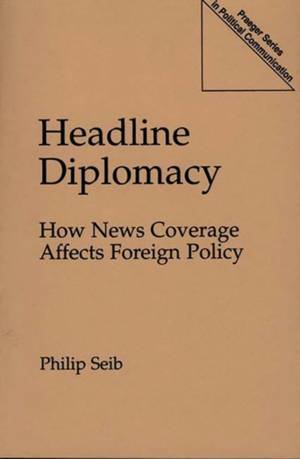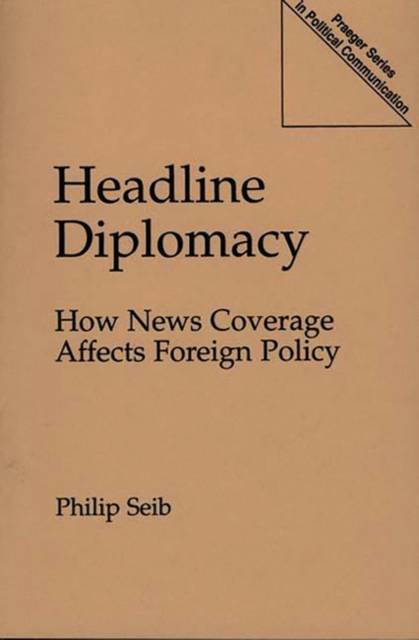
- Afhalen na 1 uur in een winkel met voorraad
- Gratis thuislevering in België vanaf € 30
- Ruim aanbod met 7 miljoen producten
- Afhalen na 1 uur in een winkel met voorraad
- Gratis thuislevering in België vanaf € 30
- Ruim aanbod met 7 miljoen producten
Zoeken
€ 76,45
+ 152 punten
Uitvoering
Omschrijving
Seib explores the many ways in which news coverage shapes the design and implementation of foreign policy. By influencing the political attitudes of opinion-shaping elites and the public at large, the news media can profoundly affect the conduct of foreign policy. Seib's text analyzes important examples of press influence on foreign affairs: the news media's definition of success and failure, as in reporting the 1968 Tet Offensive in Vietnam; how public impatience, fueled by news reports, can pressure presidents, as happened during the Iran hostage crisis of 1979-81; how presidents can anticipate and control news media coverage, as was done by the Bush administration during the 1991 Gulf War; how press revelation or suppression of secret information affects policy, as in the cases of the Bay of Pigs, the Cuban missile crisis, and various intelligence operations; how coverage of humanitarian crises affects public opinion; the challenges of live TV coverage; and the changing influence of news in the post-Cold War world. By covering a wide range of issues and examples, this important text will stimulate thoughtful appraisal of the relationships between the news media and those who make policy. It will be of interest to students and scholars in journalism, political communication, and international relations.
Specificaties
Betrokkenen
- Auteur(s):
- Uitgeverij:
Inhoud
- Aantal bladzijden:
- 208
- Taal:
- Engels
- Reeks:
Eigenschappen
- Productcode (EAN):
- 9780275953751
- Verschijningsdatum:
- 25/11/1996
- Uitvoering:
- Paperback
- Formaat:
- Trade paperback (VS)
- Afmetingen:
- 155 mm x 230 mm
- Gewicht:
- 331 g

Alleen bij Standaard Boekhandel
+ 152 punten op je klantenkaart van Standaard Boekhandel
Beoordelingen
We publiceren alleen reviews die voldoen aan de voorwaarden voor reviews. Bekijk onze voorwaarden voor reviews.











